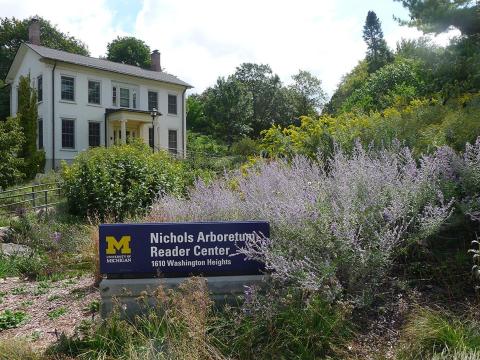At MBGNA, we are working to reduce our environmental impact by transitioning to electric vehicles and battery-powered equipment. This move supports our long-standing commitment to ecological stewardship while addressing the practical needs of maintaining vast and diverse landscapes.
Over the last few years, we have made significant progress, switching over many of its smaller tools, like leaf blowers, hedge trimmers, and weed whips, to electric power. While larger, more powerful gas-powered equipment is still occasionally used for heavy-duty work, most general landscaping tasks are now completed with battery-operated tools.
On the vehicle front, MBGNA operates an integrated fleet of electric and fuel-powered utility vehicles. According to Mike Stadler, our Building, Turf & Equipment Manager, “We have three electric utility vehicles at Matthaei Botanical Gardens, including a golf cart, two electric Gators, and an electric Club Car Carryall.”
However, at the Arboretum, the expansive and rugged terrain presents unique challenges. Despite a keen interest in electric options, logistical hurdles such as charging infrastructure and the need for multi-passenger utility vehicles complicate the transition. “We’ll be replacing the gas Gator at the Arboretum this year, but finding an electric alternative that meets the team’s needs has been tricky,” Mike noted.
Our commitment to this effort has been greatly supported by a substantial financial investment from the University’s Provost Office, for which we are deeply grateful. This generosity, along with the backing of our community, partners, and the philanthropic supporters who share our vision, has been instrumental in making our progress possible. Each electric vehicle and piece of equipment comes with a significant cost, so this investment is crucial in driving our efforts forward.
Looking ahead, MBGNA is committed to exploring more electric options, including potentially adding an electric riding mower in the future. “It’s something we’re considering, but we need to do a study to see if it’s feasible given the charging demands,” Mike said. One of the biggest factors limiting a full transition to electric vehicles and mowers is infrastructure. “Charging capabilities at both sites need to be evaluated before we make any major changes,” Mike explained. “We’ve already had issues with overloaded breakers at the Gardens garage, where we charge several vehicles at once.” MBGNA will need to assess the electrical grids at both the Gardens and Arboretum before fully committing to larger electric vehicles or mowers.
To make this happen, we’re looking into feasibility studies to see how we can bring more electric mowers into our mix. We’re also coming up with creative ways to improve our charging infrastructure. Since other University departments have had similar issues, we’re teaming up with them to learn from their experiences and find the best solutions together.
MBGNA’s shift to electric tools is part of a larger sustainability effort that aligns with broader initiatives at the University of Michigan as well as those within the Ann Arbor community. While external pushes have played a role, our transition to electric power has been in motion for years. This progress is just the beginning, and with ongoing support and collaboration, we’re excited to further reduce our environmental footprint and continue to explore sustainable practices to care for the landscapes we steward.




